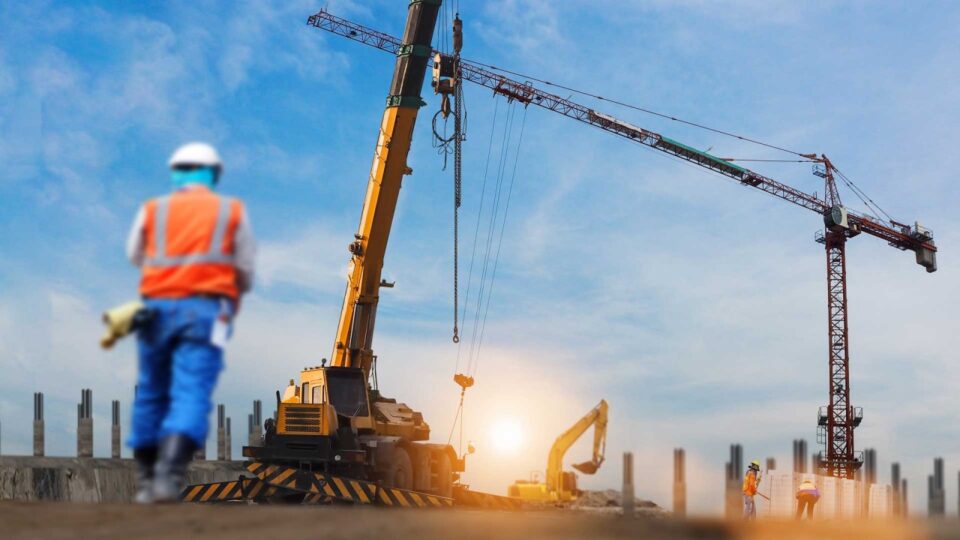Construction sites rely heavily on cranes to lift and move heavy materials, but these powerful machines can pose significant risks when not handled properly. Crane accidents are among the most dangerous incidents on construction sites, often leading to severe injuries, fatalities, and costly project delays. Understanding the root causes of these accidents is crucial for improving safety measures and preventing future incidents.
From equipment failures to human error, a variety of factors contribute to crane-related mishaps. By identifying common causes, construction workers and site managers can take proactive steps to mitigate risks and ensure a safer working environment. Staying informed about these hazards is not just a best practice—it’s a responsibility that can save lives.
Common Crane Accidents and Their Impact on Worker Safety
Crane accidents significantly jeopardize worker safety, often resulting in severe consequences. These incidents disrupt operations while exposing workers to heightened risks of injury or fatality.
- Overturned Cranes: Cranes can tip over during lifting operations due to improper load calculations or unstable ground conditions. Overturned cranes often lead to extensive property damage and pose life-threatening risks to nearby workers.
- Falling Loads: Load detachment caused by rigging failures or improper securing frequently leads to falling materials. Falling loads can inflict fatal injuries on workers within the crane’s operating radius.
- Boom Collapses: Structural issues or overloading can cause crane booms to collapse unexpectedly. These collapses endanger operators and ground workers, often causing catastrophic injuries.
- Contact With Power Lines: Electrocution accidents occur when cranes make direct contact with overhead power lines. These incidents often result from inadequate planning or failure to identify existing electrical hazards.
- Mechanical Failures: Failures in critical crane components such as brakes, hoists, or gears can lead to sudden malfunctions. Mechanical breakdowns compromise control, increasing the likelihood of accidents.
These hazards underline the importance of addressing construction site risks. Applying stringent safety protocols and engineering controls reduces the occurrence of these commonly crane accidents, ultimately safeguarding worker lives.
How Equipment Malfunctions Contribute to Crane Incidents
Equipment malfunctions rank as one of the leading causes of crane-related accidents, often resulting in catastrophic outcomes. When critical components like brakes, gears, or hydraulic systems fail, they compromise the crane’s control mechanisms and stability. These failures can cause unintended movements, load drops, or structural collapses, endangering workers nearby.
Improper maintenance accelerates wear and tear on essential parts. If inspection schedules aren’t met or repairs are delayed, damage to mechanical systems worsens. For example, worn cables or weakened counterweights increase the likelihood of sudden operational failures during lifting tasks.
Electrical system issues, including short circuits or faulty connections, also contribute to crane malfunctions. These problems may cause erratic crane behavior or render safety features, such as emergency shut-offs, ineffective. Electrical faults are particularly hazardous when they lead to power surges affecting lifting precision.
Manufacturing defects, though less common, pose significant risks. If a crane component is flawed during production, it may fail under stress, even with proper maintenance. Site managers need to verify equipment reliability before use to avoid these incidents.
Equipment malfunctions are a core element of the Most Commonly Crane Accidents, highlighting the need for diligent inspection, routine maintenance, and adherence to operational standards to ensure safety.
Human Error and Its Role in Construction Site Accidents
Human error contributes significantly to crane accidents on construction sites. Mistakes during operation, planning, or communication can lead to unsafe conditions that increase the likelihood of incidents. Operators often misjudge variables like load weight or crane capacity, resulting in tipping or falling loads. Inadequate training is another factor, as untrained workers may misuse controls or lack awareness of potential hazards.
Poor communication between team members also heightens risks. Misunderstandings or unclear instructions during crane operations can cause improper load handling or positioning, leading to accidents. Site managers share responsibility when they bypass essential safety measures, fail to conduct pre-use inspections, or assign tasks to underqualified personnel.
When human error is paired with challenging site conditions, such as high winds or uneven terrain, risks escalate. However, addressing these issues through thorough training, clear communication, and adherence to safety protocols can significantly reduce the impact of human error on crane-related incidents.
Importance of Regular Crane Inspections and Maintenance
Regular crane inspections and maintenance play a vital role in preventing the most commonly crane accidents on construction sites. Routine evaluations help identify wear and tear in critical components, such as cables, gears, and brakes, before they lead to malfunctions. Addressing these issues promptly enhances equipment reliability and reduces the risk of incidents like falling loads or mechanical failures.
Inspection schedules ensure that cranes comply with safety standards set by occupational and industry regulations. By adhering to these guidelines, construction teams minimize legal liabilities and improve worker safety. Neglecting inspections increases the likelihood of accidents, leading to injuries, fatalities, or costly project delays.
Preventive maintenance maximizes crane performance by addressing potential problems proactively. Lubricating moving parts, calibrating load indicators, and replacing failing systems ensure the machine operates under optimal conditions. Poorly maintained equipment can result in uncontrolled movements or hazardous breakdowns.
Qualified technicians verify crane stability, test hydraulic systems, and inspect structural components during professional assessments. This process prevents accidents caused by undetected faults, demonstrating the necessity of trained experts for thorough evaluations. Reliable maintenance procedures safeguard construction workers from risks associated with crane operation.
Adhering to Safety Protocols to Prevent Injuries
Adherence to safety protocols reduces crane accident risks by addressing hazards proactively. Construction sites that implement strict safety measures, such as load limit adherence and proper site preparation, enhance operational safety. Workers avoid dangers like falling loads or crane collapse by following clearly defined procedures for load handling and equipment use.
Training ensures operators and ground personnel understand protocol details and potential hazards. Certification programs equip crane operators with the skills needed to assess equipment capacity, understand operational limits, and communicate effectively with team members. Workers trained in safety measures help minimize incidents stemming from human error.
Personal protective equipment (PPE) protects workers from injuries during crane operations. Helmets, visibility vests, and gloves mitigate risks from falling debris, load movement, and contact with crane components. Using the correct PPE aligns with safety standards, ensuring workers are shielded from preventable harm.
Regular risk assessments identify on-site vulnerabilities and reduce accident likelihood. Inspections of crane placement, ground stability, overhead power lines, and weather impact provide a safe operational environment. These evaluations inform safety planning and reduce exposure to dangerous conditions.
Safety enforcement and compliance ensure all team members follow established guidelines. Site managers enforce safety rules, conduct audits, and address policy breaches to create a disciplined safety culture. Proper implementation of these actions mitigates common risks, such as those detailed in resources like The Ahearne Law Firm, PLLC, which highlights the most commonly documented crane accidents.
The Role of Training in Reducing Crane-Related Risks
Crane safety begins with proper training and awareness. When operators and site personnel are equipped with the knowledge to identify hazards and follow safety protocols, the risks of accidents drastically decrease. Training ensures that everyone understands their responsibilities and the critical steps needed to maintain a safe environment.
By combining thorough education, regular equipment maintenance, and adherence to safety standards, construction teams can minimize the dangers posed by crane operations. A proactive approach to safety not only protects lives but also ensures smoother project execution and long-term success for the industry.

